Cygnet Czarinas Read online
Page 10
All these images are brought to life before her as she carefully cleans the shield’s innumerable dents and scratches, each one lovingly caressed, as if she were tending the wounds and scars he must have also received in his many battles: each one revealing that his heroic tales are true, when they could so easily have been lies or at least exaggerations.
And so what does that say of his protestations of love?
While he had talked, entertaining her with his tales of valour, he had begun to be increasingly more open with her (although, of course, he had continued to keep his identity secret, for he had vowed to attend the tournament as an unknown knight).
His love, he had told her, was for the fairest lady he had ever seen: and yet he was unworthy of her, and so his love for her must forever remain secret and undisclosed.
Indeed, he continued, this lady was so beautiful that he would far rather stay by her side than attend the tournament he was heading for.
But the prize offered was the most fabulous ruby, one that glowed like a resplendent heart: and he would prove his love for his lady by winning this glittering heart for her.
‘But surely no lady would expect your own sacrifice as proof that you worship her!’ a horrified Elaine had gasped, thinking of how the unbeatable Lancelot had already won all the other eight jewels that King Arthur had presented as prizes at his yearly tournaments.
‘Ah, but it has already been declared that this time everyone will have a fair chance of winning this fabulous jewel,’ the knight had reassured her, ‘for Lancelot won’t be appearing at the tournament as he would normally.’
And so, borrowing an old shield of Elaine’s father’s to complete his disguise, the knight had set off for the tournament: wearing her favour of red with pearls, even though he had never honoured any other woman in this way before.
*
As Elaine covered the shield in the protective embroidery she had made for it, the mirrored surface flashed silver, green and blue, reflecting the image of a mounted knight riding slowly down the slight hill leading towards the castle’s gateway.
She rushed towards the window, her heart no doubt redder and glowing more brightly than any fabulous jewel: but the knight, although every bit as expensively armoured as her own love, carried an easily recognisable shield, for it bore the device of Sir Gawain.
Elaine’s father welcomed Sir Gawain as warmly as he would any knight from King Arthur’s court: even the mysterious knight, when he had arrived unexpectedly at the castle, had been made welcome, his garb and manner being quite obviously that of a well-respected knight of the court.
Sir Gawain had news of the tournament, the mysterious knight having beaten anyone set against him. Before he had collected his prize of the jewel, however, he had been carried from the field badly wounded.
Sir Gawain had noticed that the knight had worn the favour of Elaine the White, and that his companion was Sir Lavaine, Elaine’s brother; and so he wished to leave the priceless ruby here for the knight to collect when he had recovered.
The ruby glowed as fearfully as if it had been the knight’s own heart torn bloodily from his body. Just as Elaine had witnessed every detail of the knight’s victories as she had tended to his shield, now she saw every sickening wound he had received in the lines of light erupting from this gem without price.
Even as Gawain left the castle, Elaine and her older brother Sir Torre mounted up and set off to look for the wounded knight. Riding urgently back along the route towards the tournament, taking only the barest rest and constantly asking after their brother and any sightings of a sorely wounded knight, they eventually found him lying close to death in an old hermit’s cell: for despite the holy man’s skills and Sir Lavaine’s concern, the wound had unavoidably become badly infected.
But of course, Elaine would rather die herself than see this valorous knight die.
Forgoing sleep, eating little, and taking little notice or care of her own wellbeing, Elaine at last provided the dying knight with the constant attention he required, with all its attendant relentless cleaning and replacement of soured dressings.
These, after all, were real wounds she was washing and tending to, not the ones she had imagined as she had made a shrine of his shield. How much more care would she put into practice here, as opposed to the chapel dedicated to her love for him?
Like him, she hovered between the realms of the living and the dead: for how else was she supposed to bring him back from the edge of death?
Many people speak of the miraculous powers of the Waters of Life: but many, too, proclaim that anyone mortally injured must first be bound and knitted together by the application of the Waters of Death, for it is only these that can begin to heal a sourly wounded body.
Little by little, the knight began to recover, until he was well enough to return to Astolat with Elaine and her brothers. Here, within the more comfortable confines of the castle, his recovery became even quicker, such that the knight had soon reached a point where he felt well enough to ride unaided
Preparing to leave Astolat, he thanked Elaine, offering to pay for her services.
He regarded her as dearly as he would a close friend or even a sister, he told her, taking away with him the glistening, well-cared for shield.
And naturally, he also left with the glowing ruby heart.
*
Once again, poor Elaine remains sleepless.
She hardly eats.
She thinks little of taking care of herself, of her own wellbeing.
She is dying, everyone soon realises, of a heart that has been shattered.
She who was once called Elaine the Fair, Elaine the White – for her nature and beauty were as pure as the soul, as white as a swan’s (which, after all, in the old language is the meaning of the name Ealaine) – can now only be described as Elaine the Black.
When she finally passes away, her heartbroken father and brothers follow her last instructions.
They place a white lily in her pale hands. They lie out her lifeless body within a small, black-samite draped swan boat.
They set the boat adrift, letting it flow downriver towards Camelot, pulled by a black swan.
At a window Elaine passes beneath, there briefly glows a fabulously blood red jewel, redder than any glistening heart. It flies from the perfectly white hand that holds it, that disdainfully tosses it aside, declaring it nothing but a sign of Lancelot’s unfaithfulness.
Queen Guinevere has heard how he won the jewel wearing the favours of another lady, the blood red and white tears of Elaine of Astolat.
The ruby lands upon Elaine the Black’s breast, shattering the light in its rare beauty; resting there now as if it were a glistening heart, torn bloodily from her very body.
*
Chapter 32
‘One of my favourites; your best so far,’ the girl announced, admiring the picture, the wistful longing of A Lady Holding a Rose.
The dog she carefully cradled in her arms similarly curiously observed the looming picture, its eyes full of sparkling intelligence, as if it too fully understood the meaning behind the tale.
The knight had been unknown to Elaine, a mystery to her: and yet she had worshipped him, to the extent that her life would be empty without him, her death preferable to living without his love.
‘It’s not one of mine I’m afraid,’ Sandy admitted a little reluctantly, for she too admired its subject, its quality. ‘It’s a similar style, even a scene I might well have wished to create…’
Her voice faded, her sense of uncertainty increasing as she studied the picture; for she bizarrely began to feel sure that it might actually be one of her paintings after all.
But that, of course, was impossible.
‘Oh, it’s undoubtedly one of your paintings,’ the girl informed Sandy assuredly.
Sandy shook her head doubtfully.
‘It can’t be, I’ve…’
She paused yet again.
She had painted this!
But when?
Just a few months ago!
But…how was such a thing possible?
She couldn’t be sure of that; and yet she could be sure that she had painted this somehow, somewhere, sometime.
‘It’s not possible!’ she insisted uncertainly.
‘And yet; here it is!’
The girl grinned happily.
‘How could that be possible?’ the czarina asked with a pursing of her lips, a mischievous glittering of her eyes.
‘Only…only if I was away longer than I thought,’ Sandy replied edgily, unsure herself where her thought process was taking her. ‘And I was there…but also here?’
The girl nodded in happy agreement.
‘The Waters of Death complete their work in their own time, not mine, and least of all yours; although you too are now obviously not completely constricted by time’s course.’
She drew Sandy’s attention back to the painting with a wry frown.
Yes, yes: Sandy could recall painting this now.
The research into her subject matter.
The drawing of the cartoon.
The mixing of the paints.
The placement of the brush on canvas, the strokes that flowed so naturally, so unrestrained, from her supple fingers.
Part of her here, painting this wistful Elaine.
Part of her elsewhere, facing death.
Being saved from death.
‘With these paintings, aren’t you in some way living in someone else’s past?’ the girl asked her curiously. ‘So,’ she continued before Sandy could answer, ‘if it had been intended that you live sometime in the future, but it turned out that wasn’t entirely possible – then wouldn’t you take the opportunity to live in some other time?’
Sandy grimaced as she attempted to make sense of this. Before she had any chance to ascertain its meaning, however, there was flurry of fur as the previously docile dog unexpectedly leapt up out of the girl’s arms.
Leaping down to the floor, the dog landed athletically on its soft paws, skittering only slightly on the polished tiles as it half spun around, darting off at surprising speed towards a partially opened door.
With an uncharacteristically startled cry of dismay, the girl rushed after the dog, throwing the door open wider as she disappeared into the darkness lying beyond it.
Sandy instinctively followed after them, finding herself rapidly descending steep steps leading into the virtually solid blackness of a poorly lit basement.
The basement was full of angry shouting, of terrified wailing; and the abruptly sharp cracks of guns.
*
Within the thick darkness of the cellar, Sandy came across a scene of chaos.
There were a number of highly agitated men with guns, soldiers maybe, who were shouting menacingly in a language she took to be Russian.
Before them, but trapped against the far wall, were the four girls, the smallest amongst them holding her dog close to her chest. There was also a boy there, probably the one Sandy had seen earlier by the shores of the lake, and an older woman crouching in their midst.
The surrounding men were obviously threatening them all; yet although petrified, the children and the woman were tending as best as they could to a fallen man with blood pouring from his wounds.
On the floor around them there were at least three other wounded or dead adults.
The woman was admonishing the men, perhaps pleading with them for mercy – yet they were in a rage, an uncontrollable frenzy, that meant they couldn’t be dissuaded from their task.
They raised their guns again, fired again, and again, all at close range.
Even so, even as their mother died, the children clung on to life.
And so the men advanced on them, resorting to the axe, the clubbing of gun stocks, and the bayonet.
*
Chapter 33
Sandy cried out, rushed forwards in the hope of somehow helping the children.
But no one was even aware she was there.
She couldn’t pull any of the men back, for her hands simply passed uselessly through them.
She couldn’t watch it all any longer.
She closed her eyes, tightly: bringing on a complete darkness.
Then a complete silence too.
When she tentatively opened her eyes, she was back in the room of paintings.
There was another painting there now: no, there was the faint presence of a painting.
One that she will paint in the near future.
One that will only later really grace this wall.
A picture of Undine. The water nymph who had no soul.
Why would she paint that?
What of the girls, the boy?
They had their souls, it seemed.
Hadn’t the girl – Anastasia, that was her name – said that her sister (Maria, her sister’s name was Maria) had entrusted her soul to her, to Sandy?
Olga. That was the name of the eldest sister.
Alexis: that was the boy.
And, of course, she already knew of Tatiana.
Then there was their mother, the Czarina Alexander.
And their father, the Czar Nicholas the Second.
Sandy was aware of their names too.
She was also aware that, incredibly, all this was to take place sometime in the future.
When there would be a revolution in Russia.
And the Czar and all his family would be overthrown; and murdered.
How did Sandy know all this?
Of that, she couldn’t be sure.
She was there: she really was there – not just now, as an observer of a future event.
She felt entirely certain that she had somehow also been there at the actual scene, the very moment in the future when it will all take place.
And yet no one had seemed to be aware of her presence.
Realising that she was still holding the card, she glanced at it once more, hoping it might provide the beginnings of an answer to what was happening to her; but the card had changed – it was a whole new image.
*
The new image featured the looming white mountain, seen from its base.
The girl formed from what could be an embroidery of the finest lace was also there, looking for all the world like a lost soul, a heart that could be a burning flame blazing inside her.
She could have been made of the delicate gauze used to make the mantle for a gas lamp.
She was glancing up towards the very top of the mountain, to where five swans (portrayed here as small as doves) swooped gracefully around it: but was that because she was looking back, having descend to its base, or because she was contemplating the arduous journey upwards that she must make?
This was the girl, of course, that Sandy had sensed had a connection to her: the girl whom, she had briefly decided, might be the real her.
Impossible!
Ridiculous!
There was another detail hidden within the image, one so small and seemingly unimportant that Sandy might have missed it: sections of the mountain’s white stone were glowing, as if this was also partially aflame. And as pieces fell away to strike the ground, they sprouted to become bared men, naked women.
She began to form in her mind further details of her own painting.
The flower she would feature would be the columbine, its name rooted in the Latin for dove, its star-like shape a representation of the Seven Gifts of the Holy Spirt; and therefore regarded as a protection against evil.
*
Chapter 34
Sandy walked from the gallery out into the hall, noticing in her passing that the front door was open, revealing the harsh flurries of snow surging just beyond the porch.
It was the time of changes within the Russian house.
It was as if, as on that first day when she had first arrived here, she had just stepped from the swirling snow into the hall.
When she had pass
ed through here only moments before with Anastasia, the door had also been open, she recalled: yet it had not been snowing then.
To the Celts, columbine represented a portal to another world, a world of dreams and visions.
And wasn’t she living in another world now?
Yes, there was still the world of her dear brother Frederick – of Mary, of Gabriel, of Leighton – which she also seemed to inhabit; and yet this was her world now, this other world unaffected by time – or at least, affected by time in ways that the normal world wasn’t.
She stepped into the ballroom, where the dance was in full, overly-excited flow.
From its very centre, there arose an hypnotic ethereal glow, an otherworldly light, a glossy, silvery moon-like blaze.
The bier, for some reason, had returned.
*
The dancing couples had to whirl to a halt to avoid colliding into Sandy as she confidently strode across the brightly polished dancefloor.
Instrument by instrument, the music faded away to a pained wail.
It wouldn’t be one of the girls laid out upon the bier, Sandy realised.
It would be Alexis, the boy.
Like a severely wounded Lancelot, he had been laid out upon his bed as if hovering between life and death.
And yet he had suffered no obvious wounds.
A haemophiliac: yes, that was it.
Alexis only had to suffer the slightest of wounds and his bleeding would be more or less unstoppable, incurable.
He suffered the wounds of a future not yet played out. That was his role to play.
Seeing Sandy approach, Alexis rose up from the elegantly draped bier to take up a relatively comfortable seating position.
‘Welcome, dear sister,’ he said with a smile, offering her his hand in greeting.
‘Sister?’ Sandy replied, puzzled.
And yet now she instinctively knew that, back within the gallery, her painting – her portrait of Undine – was complete.
*
Chapter 35
The Soul Obsession
They came out of the Forest of The Rusalki, much to the amazement of the fisherman and his wife.

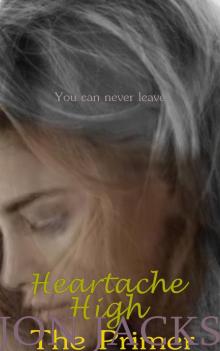 Heartache High: The Primer
Heartache High: The Primer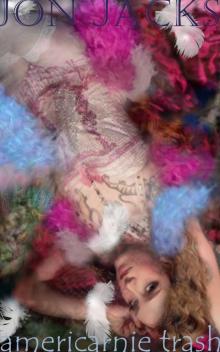 Americarnie Trash
Americarnie Trash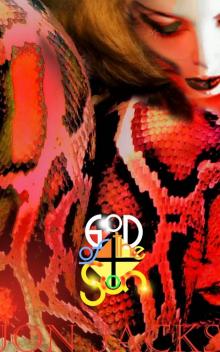 God of the 4th Sun
God of the 4th Sun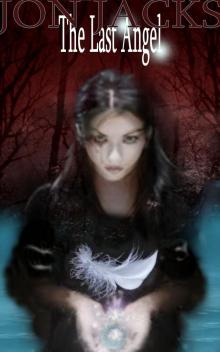 The Last Angel
The Last Angel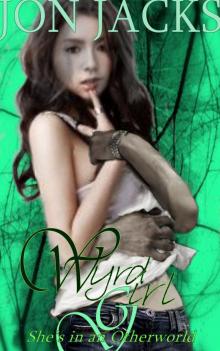 Wyrd Girl
Wyrd Girl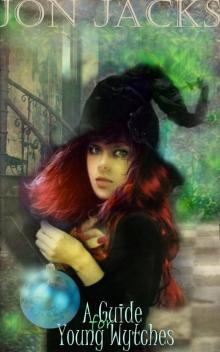 A Guide for Young Wytches
A Guide for Young Wytches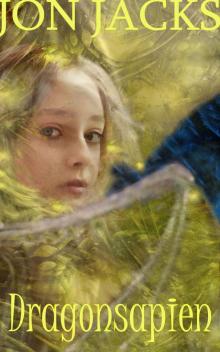 Dragonsapien
Dragonsapien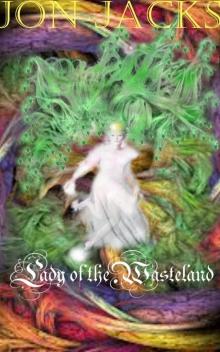 Lady of the Wasteland
Lady of the Wasteland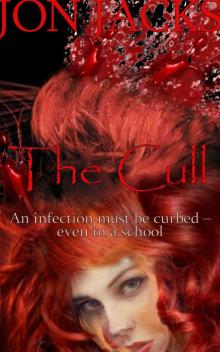 The Cull
The Cull Miss Terry Charm, Merry Kris Mouse & The Silver Egg
Miss Terry Charm, Merry Kris Mouse & The Silver Egg Seecrets
Seecrets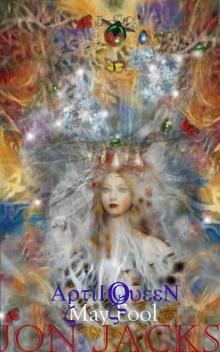 April Queen, May Fool
April Queen, May Fool DoriaN A
DoriaN A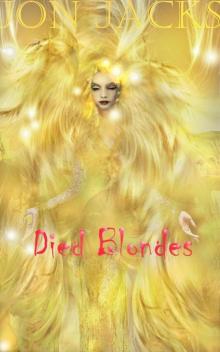 Died Blondes
Died Blondes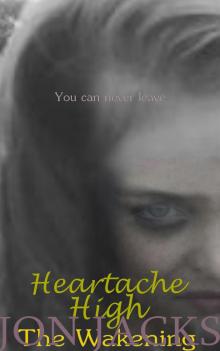 Heartache High: The Wakening
Heartache High: The Wakening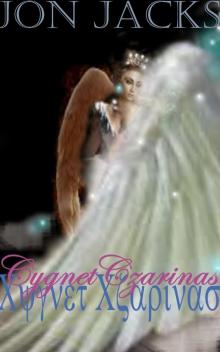 Cygnet Czarinas
Cygnet Czarinas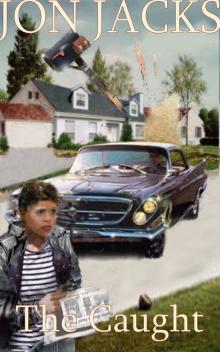 The Caught
The Caught Sick Teen
Sick Teen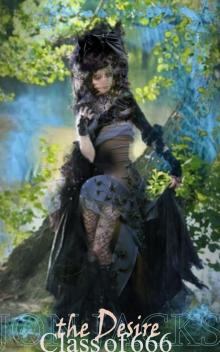 The Desire: Class of 666
The Desire: Class of 666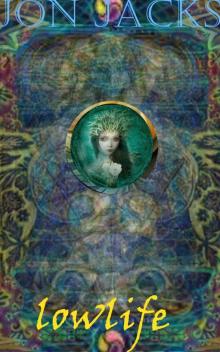 Lowlife
Lowlife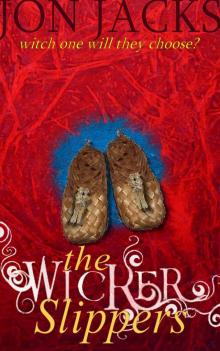 The Wicker Slippers
The Wicker Slippers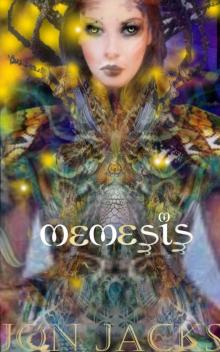 Memesis
Memesis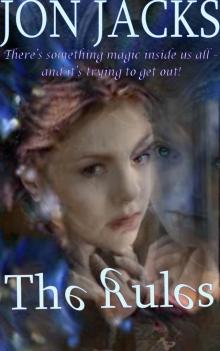 The Rules. Book 1; The End
The Rules. Book 1; The End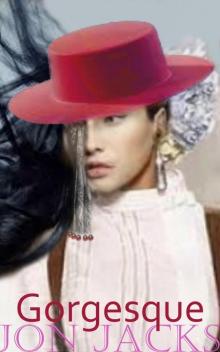 Gorgesque
Gorgesque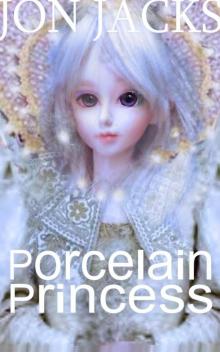 Porcelain Princess
Porcelain Princess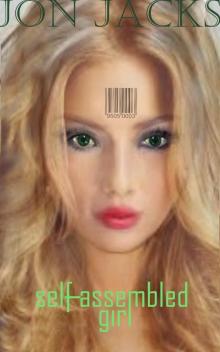 Self-Assembled Girl
Self-Assembled Girl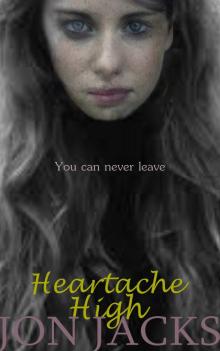 Heartache High
Heartache High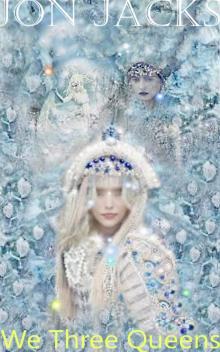 We Three Queens
We Three Queens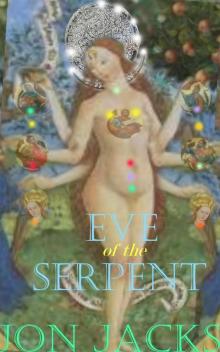 Eve of the Serpent
Eve of the Serpent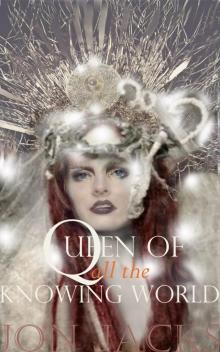 Queen of all the Knowing World
Queen of all the Knowing World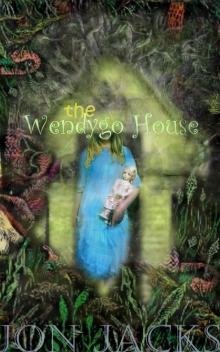 The Wendygo House
The Wendygo House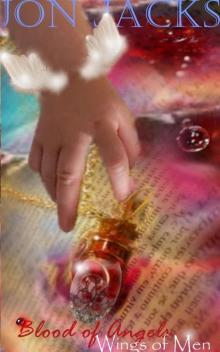 Blood of Angels, Wings of Men
Blood of Angels, Wings of Men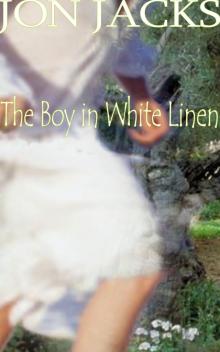 The Boy In White Linen
The Boy In White Linen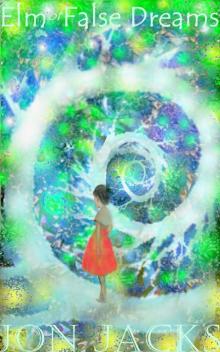 Elm of False Dreams
Elm of False Dreams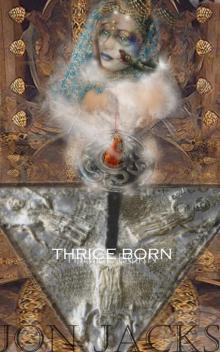 Thrice Born
Thrice Born